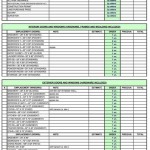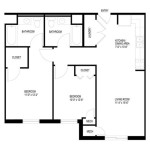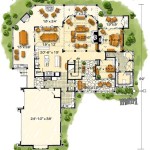How To Create House Plans
Creating house plans is a rewarding and challenging process. Whether you're a professional designer or a homeowner looking to remodel, being able to create accurate and detailed floor plans is essential. This guide will provide you with a step-by-step approach to creating house plans, covering everything from measuring and sketching to using design software.
1. Measure and Sketch the Existing Space
If you're working with an existing building, start by measuring and sketching the current layout. Use a measuring tape to determine the dimensions of each room, including the length, width, and height. Sketch out the walls, windows, doors, and any other features on a piece of graph paper.
2. Determine the Scope of the Project
Consider the changes you want to make to the space and identify the areas that will require the most attention. Are you simply updating the finishes or making major structural modifications? Knowing the scope of the project will help you determine the level of detail required for your floor plans.
3. Choose Design Software
There are various design software programs available to create floor plans. Some popular options include AutoCAD, SketchUp, and Chief Architect. Choose a program that suits your skill level and the complexity of your project. Most software offers free trial versions, so you can test them out before committing to a purchase.
4. Create a Base Plan
Start by creating a base plan that represents the existing layout or the proposed new construction. Use the measurements and sketches you collected in steps 1 and 2 to draw the walls, windows, and doors. Scale your drawing to match the actual dimensions of the space, typically 1/4 inch or 1/8 inch per foot.
5. Add Architectural Features
Once you have the base plan, you can start adding architectural features such as stairs, fireplaces, and built-in cabinetry. Use separate layers in your design software to organize these elements and make it easier to edit them later. Pay attention to the scale and proportions of the features to ensure they fit harmoniously into the space.
6. Plan the Furniture Layout
To make your floor plans more realistic and functional, consider adding furniture to the layout. Use symbols or blocks to represent different types of furniture, such as sofas, chairs, and beds. Arrange the furniture to create a logical and comfortable flow within each room.
7. Label and Annotate
Label all the rooms, architectural features, and furniture on your floor plans. This will make it easier to communicate your design intent to contractors, clients, or anyone else who needs to understand the plans. You can also add annotations to indicate specific dimensions, materials, or construction details.
8. Review and Iterate
Once you have created your initial floor plans, take some time to review them carefully. Check for accuracy, scale, and functionality. Discuss your plans with others to gather feedback and identify areas for improvement. Iterate on your design until you are satisfied with the results.
Conclusion
Creating house plans requires a combination of technical skills and creative vision. By following these steps, you can create accurate, detailed, and informative floor plans that will serve as a valuable tool for your design projects. Remember to use appropriate design software, pay attention to scale and proportions, and communicate your intent clearly through labels and annotations.

How To Create Floor Plan

Floor Plans Learn How To Design And Plan

Floor Plan Creator And Designer Free Easy App

How To Draw A Floor Plan Dummies

Blender For Noobs 10 How To Create A Simple Floorplan In

Floor Plan Creator And Designer Free Easy App

Floor Plans Learn How To Design And Plan

How To Create A Basic Floor Plan In Photo Hunny I M Home

How To Create A Floor Plan Using Conceptdraw Pro For The Classroom Draw Furniture Plans

Floor Plan Maker








